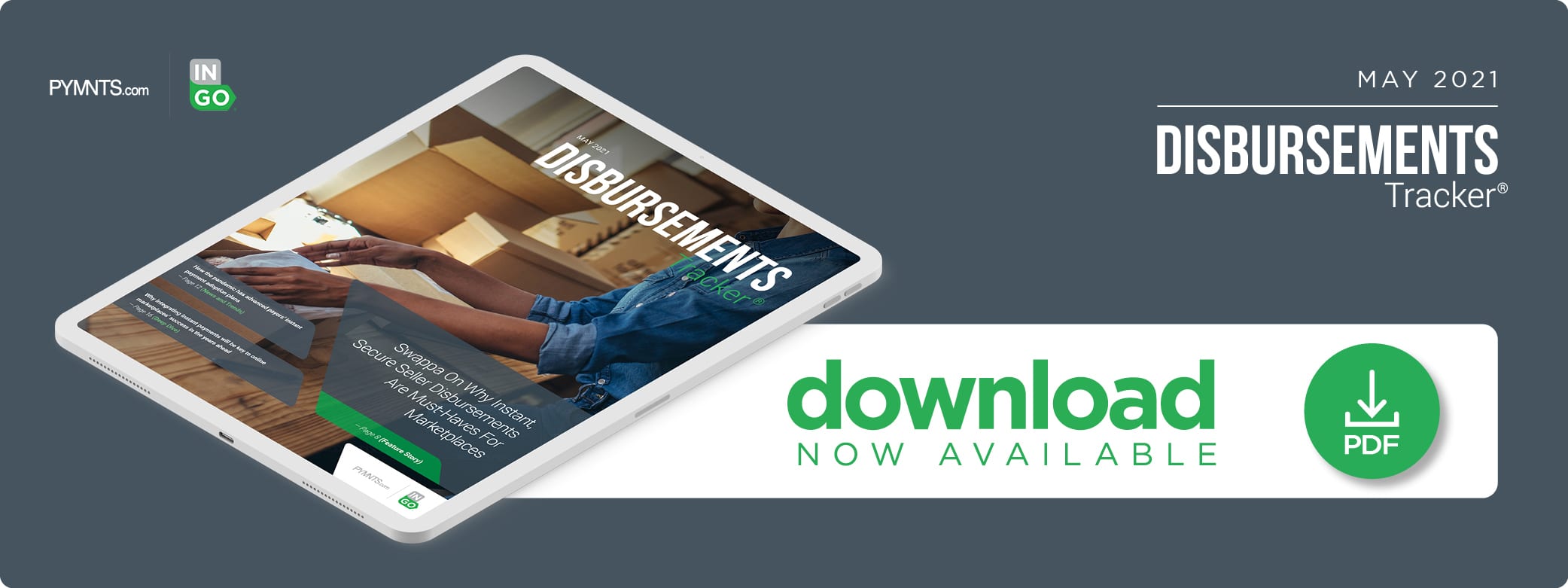Deep Dive: Why Integrating Instant Payments For Sellers Is Key For The Online Marketplace Of The Future

The online marketplace economy has thrived during the pandemic as sellers have flocked to platforms to reach larger audiences for their goods and services. Seventy-eight percent of entrepreneurs and 62 percent of Main Street businesses — those generating up to $10 million in sales — in one September 2020 PYMNTS study reported using digital marketplaces for precisely this reason, for example. Both businesses and individual sellers have ramped up their migration to marketplaces to meet consumers, who have headed online in droves to make their purchases rather than risk in-store exposures. For example, eCommerce marketplace giant Amazon saw sales climb 44 percent year over year to hit nearly $126 billion in Q4 2020 alone, demonstrating the magnitude of the digital shopping shift. Additional research found digital reselling numbers grew in the U.K., with one such marketplace reporting a 22 percent year-over-year jump.
Such growth appears to bode well for the future of marketplace shopping as well as for the overall financial health of participating businesses and sellers — but the payment experience for such vendors may not be as seamless as the one offered to consumers. Many entities listing their goods on digital marketplaces could find themselves waiting days, if not months, to receive their share of these sales, potentially interrupting cash flow.
Enabling mass payouts via instant payments could be one way to help mitigate such challenges and, in turn, propel future growth in the marketplace economy. More than 60 percent of both consumers and microbusinesses agreed that having the option of instant payments was critical for them to continue their business relationships with payors. The following Deep Dive discusses how the ongoing pandemic has increased interest in instant payments’ benefits for online marketplaces and details the challenges that may be barring these platforms from supporting such payment options.

The New Commerce, Old Payments Conundrum
Consumers and small- to midsized businesses (SMBs) pave similar expectations for their online marketplace experiences as they set out for these platforms to shop or sell: The draw for both groups is that the variety of goods or potential buyers are gathered in one place. Engaging both buyers and sellers is therefore equally crucial for these platforms, but while many marketplaces offer a variety of payment methods for buyers, the payouts to sellers have yet to reach the same level of convenience or personalization. This is true despite the fact that many businesses — especially smaller companies, including microbusinesses — are coming to value payment speed and efficiency just as much if not more than consumers. More than 67 percent of microbusinesses and 61 percent of consumers in one January 2021 PYMNTS report said that free instant payments would enhance their loyalty as clients, for example.
Marketplaces may have created digital refunds and other disbursement processes for their consumers. However, many seller payments are still conducted with the same outdated, time-consuming methods that they seem to always have used. Most sellers often find themselves facing long wait times when receiving outstanding payments from their marketplace sales. Twenty-seven percent of firms in one recent PYMNTS study admitted it usually takes about two to three days before they finally gain access to their payments.
This waiting game can hurt small businesses financially, especially those working hard to recover from the lingering economic impacts of last year. One August 2020 study found that U.S. small business revenue dropped by 52 percent in Q2 2020 compared to the same period a year prior, for example. Reducing this gap is an essential task for many of these businesses, so many seek out marketplaces that offer faster payments, especially as shopping on these platforms becomes more popular with consumers.
The Instant Payments Draw
Marketplace sellers are well aware of the potential benefits of instant payments: Late payouts still represent a financial threat to these businesses even as the economy recovers, and this is indicated by the number of sellers on the lookout for faster-paying platforms. Sixty-three percent of SMBs indicated they would switch to offering their goods on other marketplaces if it meant getting faster access to funds, according to PYMNTS data, and 61 percent of individual sellers echoed the sentiment. The same PYMNTS report estimated that marketplaces failing to offer these payment options to sellers could lose out on $129 billion to $216 billion in potential sales.
Integrating instant payments thus represents a key opportunity for marketplaces in a world where shopping and selling on digital platforms are rapidly becoming the norm. Failing to offer attractive disbursement options is likely to be one of the quickest ways to alienate sellers as this shift continues. Marketplaces must look to adjust their payout options and processes accordingly to stay competitive in the days ahead.

